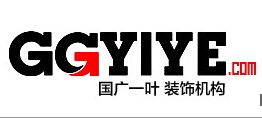凝聚的动态语汇
有力度、有质感的线条能唤起审美的联想,我们在空间中创造具有质感、力感、立体感、动感、节奏感的动态语汇,在沉静的空间中恣意展现姿态。在截取书法的柔情姿态中,同时也加入抛筋露骨、柔中带刚的线条。一幅叁维的书法作品如具有生命力的空间中流动构成,具有生机盎然的动态美,给予使用者层次丰富的视觉飨宴,而黑色的流动线条中出现的一点朱红,活跃了气氛,画龙点睛丰富了空间的色彩。
Dynamic glossaries
Strokes with strength and quality in Chinese calligraphy are aesthetically pleasing. We adopted the attitude of calligraphy and incorporated the spirit of writing with gentle stroke and powerful line to create a dynamic, energetic, 3-Dimensional and rhythmical space. It is like a 3D calligraphy work formed through energy in motion and dynamic life. A slash of red in fluid black lines further invigorates and colors the space, making it a visual feast to the users.
动静之间、坐卧之间
中国人最早并没有所谓有椅背的「椅子」,而中国人对于椅子的观念受佛教影响甚远,佛教的弥勒通常高坐于座位上,垂一足或双足,有时双足交叉下垂、有时双足下垂、有时右足下垂等,而这样或坐或卧的姿势随着佛教的盛行也影响中国人对于「椅子」的思维。比如先秦时代的人民们就已发展出一套完整「席地而坐」的文化,「席」则成为当时日常生活最普遍的坐具。直到战国时期后,低型的家具,比如「床榻」就为当时常用的坐具。到了魏晋时代则流行独坐式小榻,这种小榻也有两人坐的。而汉唐的「韩熙载夜宴图」,更能读到古人以「榻」和「罗汉床」为中心待客的场面,当时的「坐具」已有了复合性的机能。到了清朝,清朝人或卧或坐着吸鸭片的景像,我想各位歷歷在目。
Dynamic or static / Sitting or lying
It is said that originally there was no chair in China. Around AC 200 Buddhism entered China and brought with it the idea of the Buddha sitting upon a raised platform. The sitting or reclining postures of the Buddha began to have a great influence on Chinese concept of chair. History shows that in early period, woven mats, which sometimes accompanied by arm rests or low tables, were commonly used by ancient Chinese to sit on floors. The raised platform evolved as an honorific seat for special guests or officials, and longer version of mats were used for reclining and evolved into bench, daybed and bed with multiplex functions.
电脑参数化设计流程
「动静之间」从设计到施工的过程,都透过电脑辅助设计系统及电脑参数化设计流程精密控制,企图在压缩的的预算及工期内,将无秩序的物件有效模矩化与制程化。
在设计前期阶段,我们从书法笔画的资料库中定义几个形体和尺寸,在电脑参数化的环境中设计出我们期望的形体,并利用快速成型技术输出实体模型来进行设计讨论与沟通,并在电脑中来回分析与修正。进入施作阶段,我们首先利用雷射切割制作成连续渐变的断面,并在曲面强度不同的地方进行结构的补强,之后开始精确放样,组立粗坯形体。接着透过电脑数控加工加工成形。从前必须计算好材料与时间,往往十分耗时耗工,本案因借助电脑参数化控制系统,节省大量操作时间及成本。
Advanced computer design process
Under limited time and budget, CAD/CAM system, parametric design process and modular production method were employed in this project from design phase to construction to allow us to complete it as required.
In early design phase, we defined several shapes and dimensions from database of strokes to design and adjust the figures we want in CAD/CAM programs, and then Rapid Prototyping technique was used to read in data from our CAD/CAM drawing to produce physical models. When progressing to construction phase, we used Laser Cutter to create shape tweening sections and reinforced the structure according to the curve and intensity. Layout and fabrication process then started and the computer file were loaded into the Computer Numerical Control(CNC) machines for production. It significantly reduced the time and cost previously required to produce a free-form or geometric feature.




